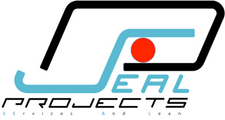HOW does LEAN look like in a SERVICES-Oriented environment?
Practical examples
In the section below we'll take a look 'inside' a Lean organisation, and see how the different aspects - as a whole - respond to a host of challenges which "define" the inner workings of any organisation:
Customer first.
- We put the customer 'center stage', and besides common sense, there is also an economic reality to this (no customers = no reason for existance of your organisation), and this customer-oriented mindset is ingrained across the organisation.
- Who our customers are is known, and systematically we keep track on their (evolving/changing) needs and expectations.
- We know their quality-requirements, and we followup on 'how' well we meet them.
- Less obvious (for some), the teams working in transversal processes are also customers, e.g. their input-needs should steer the outputs from preceeding process-step(s).
- We first ensure the customer's 'musts' are met, and only thereafter we spend time, effort, resources on 'nice-to-haves' or 'delighters'.
Processes
- Processes are a means to an end, i.o.w. they exist to meet the customers' needs.
- We aim to do this as effectively (continueing to meet the customer's requirements = Quality) and efficiently (First Time Right, with an absolute minimum of wastes as possible).
- Everybody knows processes delivering First Time Right actually are the fastest, cheapest, and most rewarding for all. No (demotivating) rework, corrections,
- Processes are known, documented, standardised based on Best Practices, and executed with discipline.
- These processes are subject of continuous attention to wastes, and how to reduce/erradicate them.
Mindset and Behavior
- We keep our finger to the pulse of our staff. Inappropriate behavior is addressed, where 'lean' behavior is rewarded and valued.
- Everyone, without exception is stimulated to 'tackle' all sorts of wastes.
- Middle and senior management shows the right behavior, and acts in line with the company's values.
- All stakeholders, either impacting or being impacted by changes, are appropriately and timely integrated in projects.
- Exchanging best practices, trainings, coaching, and collaboration across (and within) teams are the 'norm'.
- Assumptions, jumping to conclusions and purely intuitive decisions are frowned upon.
- Creativity, and Continuous Improvement are part of day-to-day business. It isn't seen as 'something on top of. We know 'change' is a constant in our lives, and by realising this it isn't hard to understand why integrating the notion of 'change' is part of day-to-day reality.
Management Systems
- Through transparency and visualisation techniques we ensure relevant information ('data' on itself is not the same as information), is available that enables to followup and steer our processes, workorganisation, progress, workload & progress, capacity, ...
- We have a sturdy communication structure, involving the appropiate stakeholders, structuredly and systematically, aided with visual supports - for efficiency reasons. I.e. an evolutionary graph is prefered, over a spreadsheet with tons of data, where-in people have to 'distill' themselves the information they need.
- All our meetings and workshops are appropriately prepared, and performed efficiently. (as a side-effect: humor, creativity and respect are quite often symptoms when communication happens correctly)
What are some of the triggers we've come across that lead to the (wise) decision to implement Lean in organisations;
•Profit margins under pressure
•Declining product and/or service quality
•Rising number of customer complaints
•Customers are leaving, new orders are drying up
•Processes are very slow, lot of work has to be re-done
•Cross-departmental processes are difficult and very demanding
•Cooperation between departments is difficult
•Increasingly more time hast to be spent in ‘fire fighting’
•Unpredictability of delivery times and quality
•Increasing work volume
•The company/organization relies (too) much on a few individuals
•Recurring problems
•Evolving market, and the company has to follow this evolution now it is still possible...
•An increasing number of late deliveries
•It is not clear enough for the people to know who does what and what is the progress status
•...
Why other organisations embraced Lean.
NEED AN EXPERT?
A person who is passionate about efficiency and effectiveness. A person who gets excited to make people grow, and recognises the huge importance to master the skill of listening. A person that invests in thorough understanding of Lean, and specialised in how to implement this in a sustainable (= lasting) way. A person with over 20 years of experience in running projects, solving operational problems, and embedding Lean's Best Practices in service oriented environments. A person that thrives on operational and organisational challenges.A person who is keen on sharing his know-how,
....to you.
Copyright © All Rights Reserved
Follow Us

